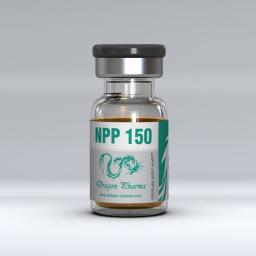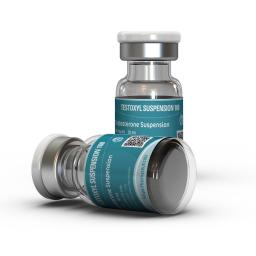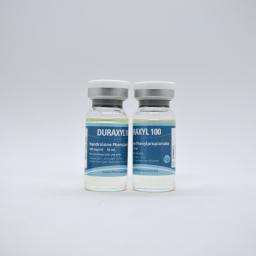What is Hormone Therapy?
Hormone Therapy (HT) or Hormone Replacement Therapy (HRT) is the giving of the female hormones, oestrogen and progesterone, and sometimes testosterone.
Oestrogen and progesterone are produced in the ovaries during a woman’s reproductive life. At menopause, levels of these hormones fall dramatically until, in post-menopausal years, small amounts of each are produced by the adrenal glands instead of the ovaries.
Testosterone is produced by the adrenal glands and the ovaries. Levels decline gradually over a woman’s life, but are significantly reduced in women who have had both ovaries removed.
How is HT prescribed?
Oestrogen alone is prescribed for women who have had a hysterectomy, as the benefits of oestrogen are all that is required. In women who still have their uterus, oestrogen alone can overstimulate the cells lining the uterus causing an increased risk of endometrial cancer. This risk is reduced by giving progesterone along with the oestrogen.
Progesterone is known as ‘progestin’ or ‘progestogen’ and is prescribed as a tablet or patch.
Oestrogens can be prescribed in the following ways:
1. Tablets – taken daily by mouth
2. Patches – changed either weekly or twice weekly
3. Skin gel – rubbed into the skin daily
4. Implants – inserted under the skin – each usually lasts four to six months
5. Oestrogen injections – less common form of administration
6. Oestrogen tablets, creams, pessaries, or ring for local application inside the vagina
Dosages and methods of administration vary according to the needs of the individual woman. What suits one woman may not suit another.
Changes may be required before the ideal method and dose is found for the individual woman. These are made under the close supervision of your doctor. Perseverance may be required at the early stages of HT and it may take up to six months to find the right combination for you.
What are the benefits for HT?
- Relief of troublesome symptoms associated with falling levels of hormones, particularly oestrogen, during menopause. For most women with moderate to severe symptoms, use of HT can be effective in relieving hot flushes, vaginal dryness, stress incontinence, insomnia and mood swings.
- HT can prevent further bone loss and fractures in women with osteoporosis where other treatments are not tolerated.
What are the possible side effects of HT?
- Some women may experience nausea, fluid retention, breast enlargement and discomfort particularly during the first few months of taking HT. Usually these symptoms subside with time. Sometimes changing the dose, brand or the way it is administered helps.
- Breakthrough bleeding can sometimes become a problem. Discuss with your doctor, ways to either eliminate or reduce this.
- Often women express concern about weight gain whilst taking HT. Research does not support that HT causes weight gain or weight loss.
- Venous thrombosis naturally occurs in one in 10,000 women per year around the typical age of menopause. HT in tablet form increases this risk to two to three in 10,000 women per year. The effect of patch therapy is as yet unknown.
- Heart disease and stroke are uncommon in peri and early postmenopausal women, except those at high risk including diabetics, smokers, those with high blood pressure and high cholesterol. The use of oral combined HT may cause a small increase in this risk particularly in women many years after menopause and should be considered when discussing HT with your doctor.
What is meant by ‘short-term’ HT?
Short-term HT is usually taken for between one to five years. This treatment may be considered by women experiencing symptoms that are distressing. It can be commenced either before or after the last menstrual period has occurred. Symptoms disappear in many women within five years of menopause, and so short-term HT is all that is required.
What is meant by ‘long-term’ HT?
Long-term HT (oestrogen with progestin) is given for five years and longer. Because of the small increased risks of combined HT long-term, use for prevention of disease (including prevention of osteoporosis) is currently under discussion. Treatment of established osteoporosis or for significant, ongoing menopausal symptoms may be appropriate, but each individual case should be assessed for the benefits and risks to that individual woman.
Do I have a greater risk of breast cancer on HT?
Long-term HT (oestrogen with progestin) is associated with a slight increase in the risk of developing breast cancer. There has been much research into this issue with some studies indicating small risk and others indicating no risk. The report from the American Women’s Health Initiative (WHI) (July 2002) indicated that there was no increase in breast cancer risk in those women who began HT at the start of the trial, though there appeared to be an increase in those who had been on HT before the trial began.
For women who have had a hysterectomy and take oestrogen only the WHI study of 11,000 women has shown no increase in breast cancer risk (in fact it showed a trend to decrease).
Any decision about HT is an individual one and should be made after each woman is informed about her individual risks, benefits, needs and concerns in consultation with her prescribing practitioner.
How should I look after my breast health?
Women between the ages of 50-69 need to be aware of the importance of regular mammograms, annual clinical examination with a GP and breast self-examination so that they become familiar with their own breasts.
Mammography screening is the best way to detect breast cancer at its earliest stages among women in the over 50 age group. Mammographic screening is recommended every two years for women aged 50-69 without breast symptoms as this is when screening has shown to be most effective.
We know that some forms of HT can increase the density of breast tissue and therefore detecting tumours is made more difficult. Each woman has an individual breast density and there is an individual response to breast density when on HT. Not every woman’s breast density changes in the same way when on HT. Overall the effect of HT seems to reduce mammographic sensitivity by about 10 per cent.
Who should not take HT?
Generally women with:
- A history of breast cancer
- Endometrial cancer
- Unexplained vaginal bleeding
- Clotting disorder
- History of thrombosis (blood clots in the veins)
- A history of or increased risk of heart disease or stroke, including those with diabetes
However even with one of the above, HT may be beneficial to some women if the risks and benefits are well understood. A non-oral form of oestrogen may be preferred. Women with liver disease, migraine headaches, epilepsy, diabetes, gall bladder disease, history of blood clots, fibroids, endometriosis and hypertension need special consideration before being prescribed HT.
What should I expect of my doctor?
1. It is important to visit your health practitioner with some questions already planned. Write your questions down. This will promote clear and concise communication between you and your doctor. It is often a good idea to book a longer consultation time.
Some possible questions may include:
- What treatment/intervention choices are available to me?
- What are the possible benefits and risks of the different choices?
- What might happen if I stop taking my HT immediately?
- Where else can I gather information (websites, services, printed material)?
- How often does my treatment need to be reviewed?
- Do I need to have a mammogram?
- Should I stop my HT prior to having a mammogram?
- What will happen if I have an abnormal mammogram?
2. If HT is started:
- A follow up visit to your doctor is necessary after the first couple of months.
- An annual check up with your doctor is essential to review ongoing reasons for hormone therapy.
- Pap test is necessary every two years.
- Mammograms are recommended every two years (between 50-69 years of age).
Who is likely to benefit from testosterone replacement?
Women experiencing a loss of libido (sex drive) together with lethargy (tiredness), providing the reason appears unrelated to psychosocial and/or relationship factors may benefit from testosterone replacement. In young women who experience premature menopause, testosterone should be considered with HT.
The testosterone is administered either as an implant or a skin cream and is usually prescribed short-term. It can be given alone or together with oestrogen and progestogen.
For further information see Testosterone
Best Steroid Products for Sale
NPP 150
|
Testoxyl Suspension 100
|
Duraxyl
|


